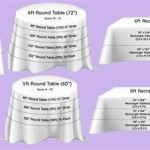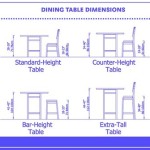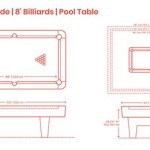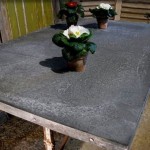Build Your Own Sewing Machine Table: A Comprehensive Guide
A dedicated sewing machine table can significantly enhance your sewing experience, providing a dedicated workspace, organized storage, and a comfortable posture. While purchasing a pre-made table is an option, building your own offers unique advantages. You can customize the design to perfectly suit your needs, choose materials that match your style, and enjoy the satisfaction of creating something yourself. This comprehensive guide will walk you through the process of building your own sewing machine table, equipping you with the knowledge and steps to embark on this rewarding project.
Choosing the Right Design and Materials
Before you begin, it's crucial to determine the design and materials that best align with your preferences and sewing needs. Consider factors like the size of your sewing machine, available space in your sewing area, desired storage options, and aesthetic preferences. Common design elements include:
- Open or Closed Base: Open base designs allow for greater legroom, while closed bases provide additional storage space.
- Work Surface Area: Ensure enough surface area for your sewing machine, fabric, and other accessories.
- Storage Solutions: Incorporate drawers, shelves, or cabinets for organizing sewing supplies.
- Height and Ergonomics: Adjust the table height to promote comfortable posture while sewing.
Materials play a vital role in the durability and aesthetics of your table. Popular options include:
- Wood: Pine, birch, or maple offer affordability and workability. Hardwood options like cherry or walnut provide durability and elegance.
- Metal: Steel or aluminum can provide a modern and sturdy framework.
- Plywood: Offers a cost-effective and strong base for the table top.
Essential Tools and Supplies
To successfully build your sewing machine table, you'll need a collection of essential tools and supplies. These include:
- Power Tools: Circular saw, jig saw, drill/driver, sander, and table saw (optional)
- Hand Tools: Measuring tape, pencil, combination square, level, wrench, screwdriver, and clamps
- Fasteners: Screws, nails, pocket hole screws, and wood glue
- Materials: Lumber, plywood, hardware, and finish (stain, paint, or varnish)
- Safety Gear: Safety glasses, gloves, and ear protection
Step-by-Step Construction Guide
Once you've chosen your design and gathered your tools and materials, you can begin the construction process. This involves a series of steps, each requiring meticulous attention to detail and accuracy for a successful outcome. Here's a step-by-step guide:
- Plan and Cut: Create a detailed plan with dimensions and cut the lumber to size using a saw.
- Assemble the Base: Construct the table base using screws, nails, or wood glue and clamps. Ensure all joints are secure.
- Create the Table Top: Cut the table top to size, ensuring it's large enough for your sewing machine and accessories. You can also consider adding a layer of plywood for a sturdy and smooth surface.
- Attach the Table Top: Securely attach the table top to the base using appropriate fasteners. Consider using pocket hole screws for a concealed joinery.
- Add Storage Features: Install drawers, shelves, cabinets, or other storage elements as desired.
- Sand and Finish: Smooth any rough edges with sandpaper and apply a desired finish, such as stain, paint, or varnish.
Adding Personal Touches and Customizations
Building your own sewing machine table allows for endless customization possibilities. You can incorporate your personal style and preferences, turning it into a truly unique piece of furniture. Here are some ideas:
- Incorporate Decorative Elements: Add decorative trim, molding, or hardware to enhance the aesthetic appeal.
- Choose Unique Finishes: Experiment with different paint colors, stains, or varnishes to create a desired look.
- Add Lighting: Integrate LED strips or a task lamp for optimal illumination while sewing.
- Customize Storage Solutions: Design storage solutions that cater to your specific sewing supplies.
Building your own sewing machine table is a rewarding project that allows you to create a functional and personalized workspace. By carefully planning, selecting the right materials, and following the construction steps outlined in this guide, you can bring your vision to life and enjoy the benefits of a custom-designed sewing table for years to come.

Quiltfabrication Patterns And Tutorials Diy Sewing Table

Making A Custom Sewing Machine Extension Table Tutorial Quilting Jetgirl

Busy Bee No 16 Make Your Own Sewing Machine Cabinet Table Diy Room Design

Craft Room Sewing Table Tutorial Decor And The Dog

Badskirt Make Your Own Sewing Desk Tutorial

The Best Diy Sewing Table Ideas For Any Space Elizabeth Made This

Diy Sink Your Own Sewing Machine Save Money Table

Diy Sewing Machine Table Dadand Com

Making The Best Ergonomic Adjustable Sewing And Cutting Table Gwenstella Made

Quiltfabrication Patterns And Tutorials Diy Sewing Table
Related Posts








